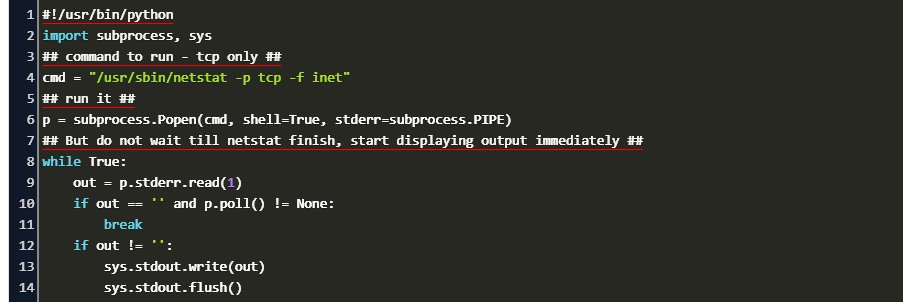
# Pass "echo", some random string, shell = True/False as the arguments to the call()

Similarly, with the call() function, the first parameter (echo) is treated as the executable command, and the arguments following the first are treated as command-line arguments.Īlso, we must provide shell = True in order for the parameters to be interpreted as strings. In the following example, we attempt to run “echo btechgeeks” using Python scripting. Syntax: subprocess.call(arguments, shell= True)
#Python subprocess call hide output code
The subprocess.call() function executes the command specified as arguments and returns whether the code was successfully performed or not. To use the functions associated with the subprocess module, we must first import it into the Python environment. subprocess.Popen() and communicate() functions.The subprocess module implements several functions for running system-level scripts within the Python environment: This is where the Python subprocess module comes into play. But what if we need system-level information for a specific task or functionality? How do we handle system-level scripts in Python?

#Python subprocess call hide output manual
Generally, we develop Python code to automate a process or to obtain results without requiring manual intervention via a UI form or any data-related form.


 0 kommentar(er)
0 kommentar(er)
